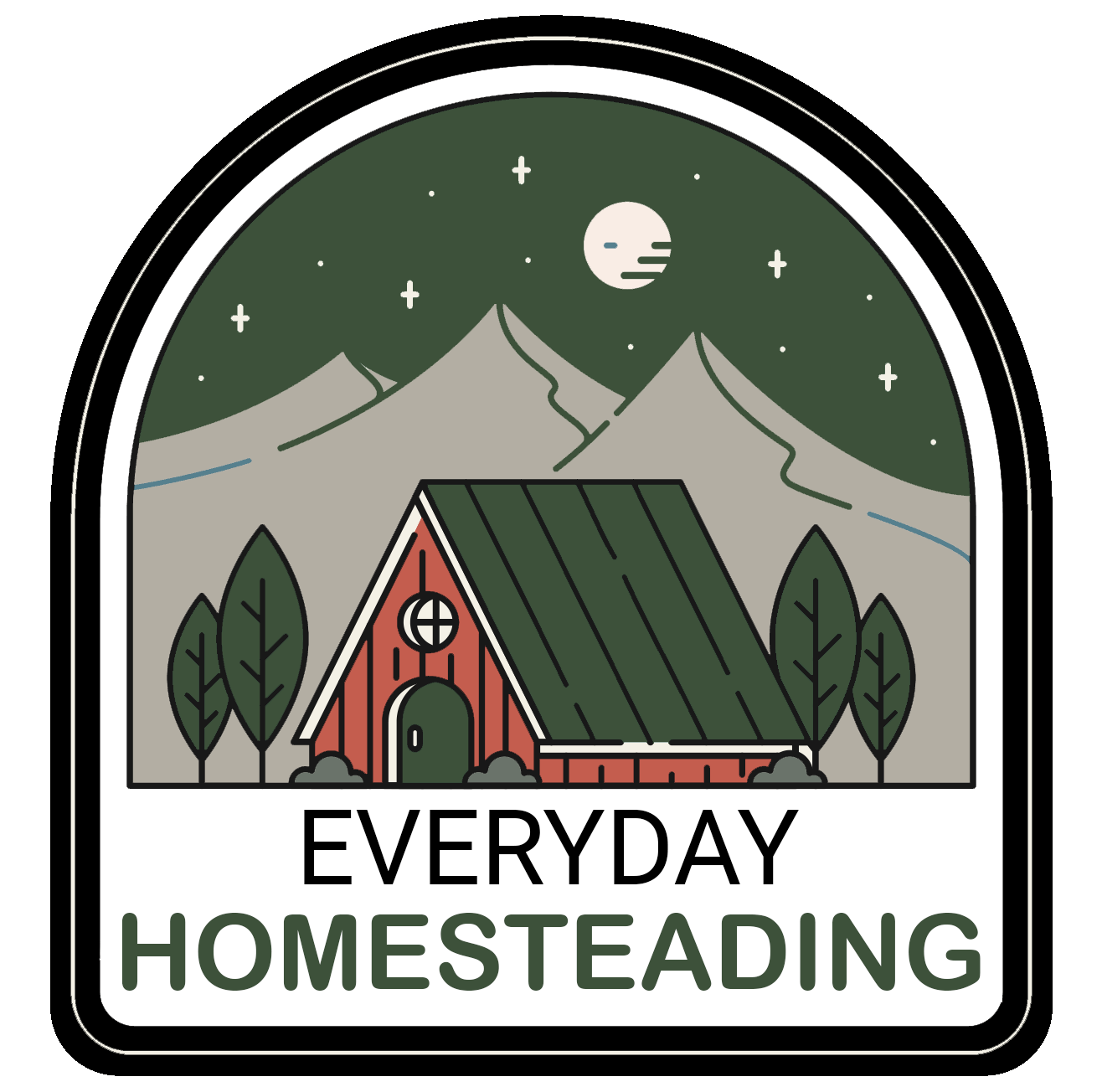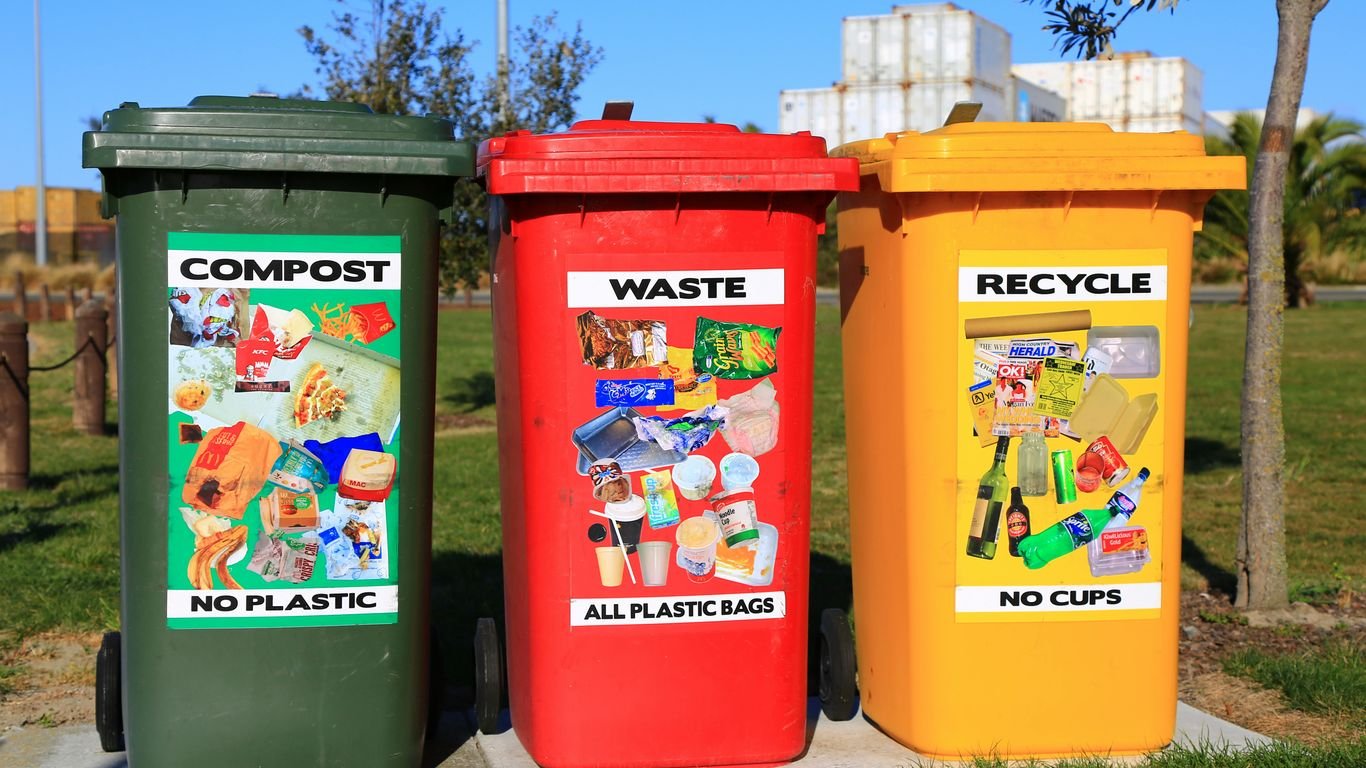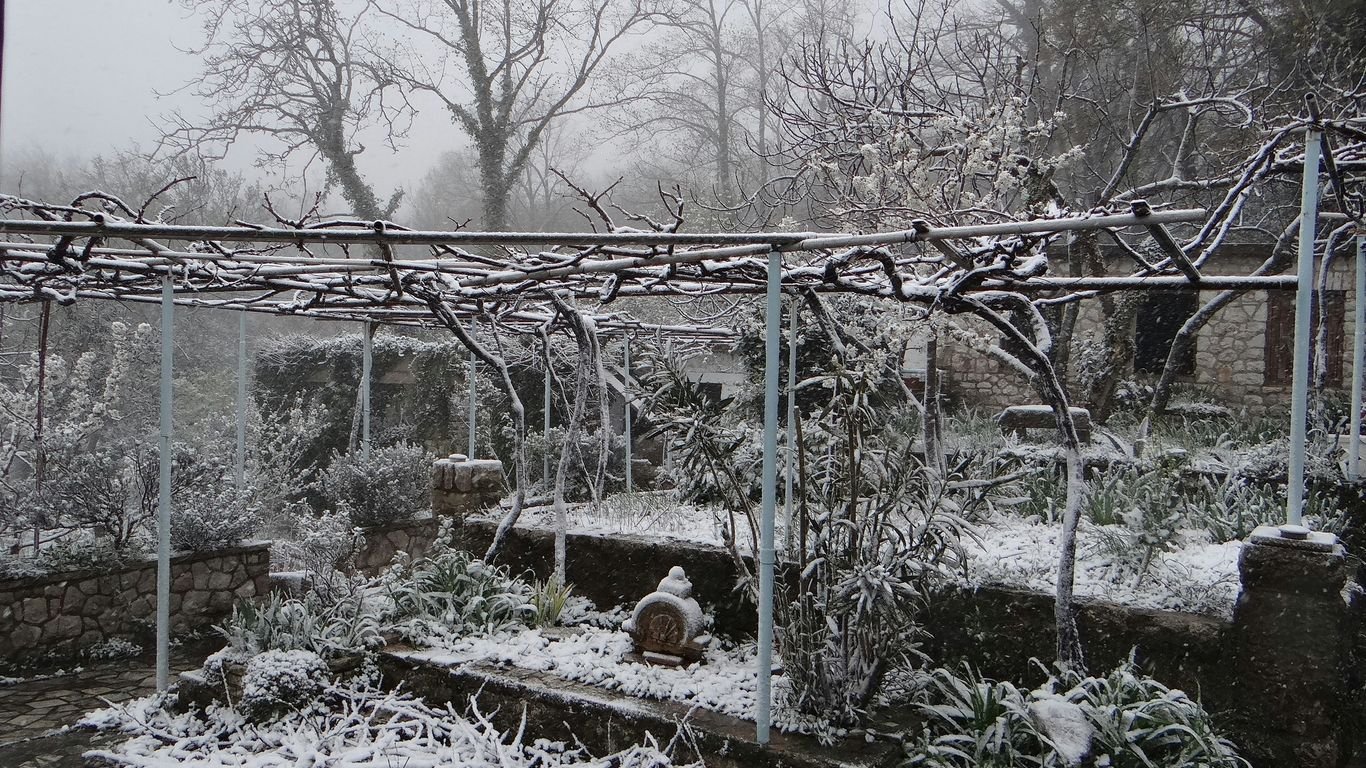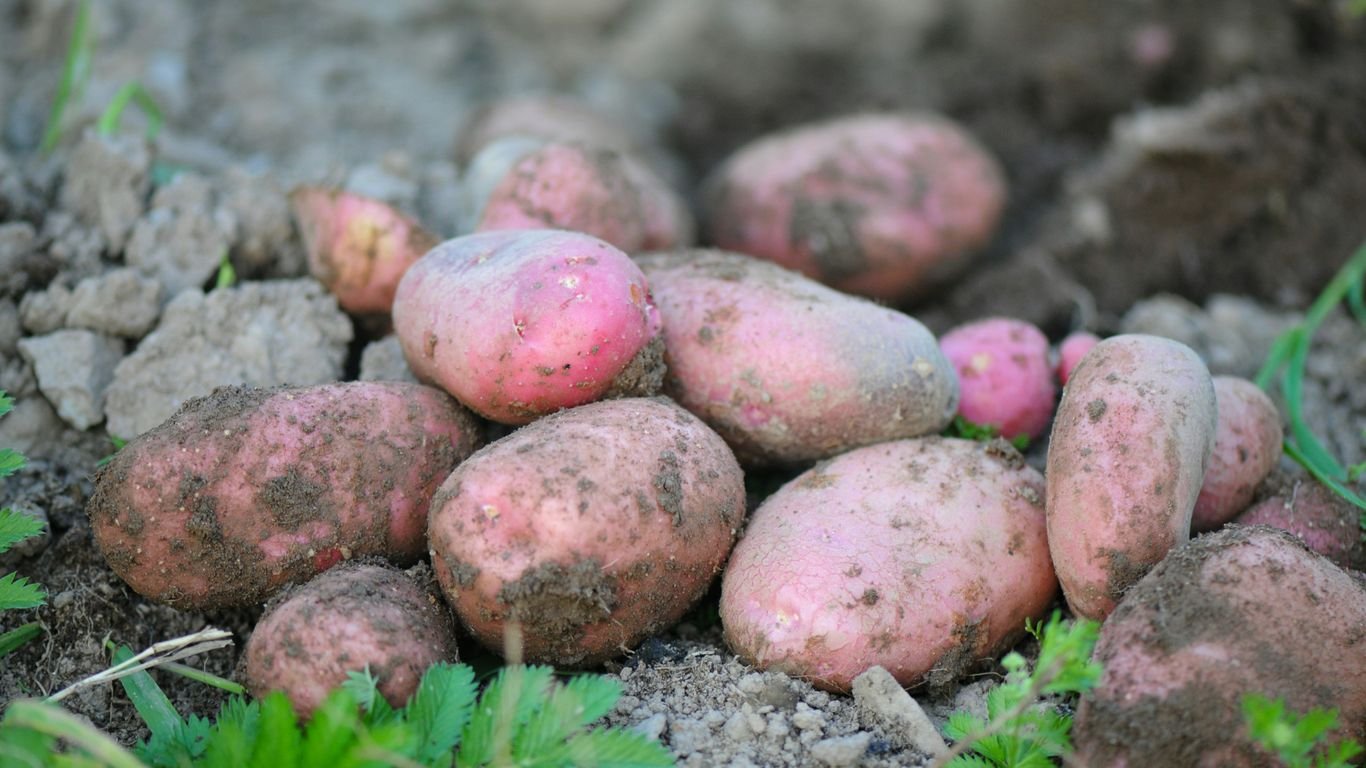How to Grow Enough Food in a Small Backyard: Space-Saving Tips

We all dream of a garden overflowing with fresh produce, but what if your backyard is more of a postage stamp? Don’t let a small space get you down! We’ve learned that with a little clever planning and the right techniques, even the tiniest plots can yield a surprising amount of food. It’s all about working smarter, not harder, and making every square inch count. Let’s explore how we can transform our limited areas into productive food-growing havens.
Key Takeaways
- Focus on growing the foods we love to eat and those that are expensive to buy, making tough choices about lawn space to maximize our edible garden.
- We can significantly increase our growing area by using vertical structures, hanging planters, and even considering our front or side yards for small backyard gardening.
- Selecting dwarf varieties of fruits and vegetables, along with compact growers like mini melons and fast-maturing microgreens, is key to space-saving agriculture.
- Employing smart planting methods such as intensive planting, the thriller-filler-spiller technique, and companion planting helps us get more from less.
- Container gardening with grouped pots, rectangular planters, and quality soil offers flexibility and efficiency, while extending the growing season through succession planting and seasonal crop choices ensures continuous harvests.
Prioritize What You Grow
When we first started thinking about growing food in our small backyard, it felt a bit overwhelming. There are so many things we could grow, but with limited space, we quickly realized we needed a plan. It’s all about being smart with what we choose to plant.
Focus on Your Favorite Foods
This might sound obvious, but it’s worth saying: grow what you actually like to eat! If you’re not a fan of kale, don’t waste precious garden real estate on it. Think about the produce you buy most often at the grocery store or farmer’s market. Those are the items that will give you the biggest bang for your buck (and your space) when you grow them yourself. For us, that meant prioritizing things like fresh tomatoes for salads and sauces, and plenty of herbs for cooking. It just makes sense to put our effort into things we know we’ll use and enjoy.
Replace Expensive Store-Bought Items
Some things are just plain pricey at the supermarket. We looked at our grocery bills and identified a few items that we could realistically grow and save money on. Things like salad greens, berries, and certain herbs can add up quickly. By growing our own, we not only get fresher ingredients but also cut down on our food expenses. It’s a win-win!
Make Tough Choices About Lawn Space
This was a hard one for us. We had a decent patch of lawn, and while it looked nice, it wasn’t providing us with any food. We had to ask ourselves if we really needed all that grass. After some deliberation, we decided to dig up a portion of the lawn to make way for garden beds. It felt a little drastic at first, but the payoff in fresh produce has been totally worth it. We figured, why grow something we just have to mow and then throw away, when we could grow food we can eat?
- Assess your current lawn usage: Is it a play area, or just decorative?
- Identify high-cost produce: What do you buy regularly that you could grow?
- Consider your favorite meals: What ingredients would make those meals even better?
We found that dedicating even a small section of our yard to growing our favorite, most-used produce made a significant difference. It’s better to grow a few things really well than to spread ourselves too thin.
Maximize Every Inch Of Space
When we think about growing food in a small backyard, the first thing that usually comes to mind is how to fit everything in. It can feel like a puzzle, but there are some really clever ways to make sure we’re using every bit of space we have. We don’t want any of that precious garden real estate going to waste!
Utilize Vertical Growing Structures
This is probably one of the most effective tricks up our sleeve. Instead of letting plants sprawl out on the ground, we can train them to grow upwards. Think trellises, stakes, or even simple netting. Climbing plants like beans, peas, cucumbers, and even some squash varieties are perfect for this. By growing vertically, we can free up a surprising amount of ground space for other crops. It’s like adding an extra dimension to our garden. We can even layer plants, putting shade-loving greens under taller vining plants that are growing up an A-frame, for example.
Hang Planters on Railings and Walls
Don’t forget about the vertical surfaces we already have! Railings on decks or patios, fences, and even the sides of our house can become prime real estate for growing food. Hanging baskets are fantastic for herbs, strawberries, and leafy greens. Wall-mounted planters or DIY vertical garden systems can also make a big difference. This is especially useful if our ground-level space is limited or gets very little sun.
Consider Front and Side Yard Options
Who says all the food has to be in the backyard? Our front and side yards often have great sunlight and can be used for growing too. We can plant compact vegetables or herbs in containers near the front door or along a sunny side path. Sometimes, these areas are overlooked, but they can offer a surprising amount of growing potential. We just need to be mindful of aesthetics and any local rules, of course.
Choose Space-Saving Plant Varieties
When we’re trying to pack a lot of food into a small backyard, the type of plants we choose makes a huge difference. It’s not just about fitting more in; it’s about picking varieties that are naturally suited for compact growing.
Opt for Dwarf Fruit Trees and Compact Vegetables
Forget those sprawling apple trees that take over an entire yard. Instead, we should look for dwarf fruit trees. These are bred to stay small, often producing fruit on a manageable scale, perfect for containers or tight garden beds. Similarly, many common vegetables have compact or bush varieties. Think bush beans instead of pole beans if you don’t have vertical space, or choose smaller cucumber and squash varieties. These often require less space to spread out and can still give us a good harvest.
Experiment with Mini Melons and Cucamelons
Who says you can’t grow melons in a small garden? There are fantastic mini varieties available, like personal-sized watermelons or small cantaloupes, that don’t need acres to mature. Cucamelons, also known as Mexican sour gherkins, are another fun option. They look like tiny watermelons but taste like a cucumber with a hint of lime. They grow on vines, so you’ll need some support, but their small size means they don’t take up as much room as their larger cousins. These smaller fruits often need less water too, which is a nice bonus.
Grow Fast-Maturing Microgreens and Sprouts
For the quickest food fix, we can’t overlook microgreens and sprouts. These are essentially baby versions of vegetables and herbs, harvested just days or weeks after sowing. They require minimal space – a sunny windowsill or a small shelf can be enough. You can grow them in shallow trays or containers. Because they grow so fast, we can plant them in succession, meaning we’re always harvesting something. This is a great way to get a continuous supply of fresh, nutrient-dense greens without needing a lot of garden real estate. You can find kits and seeds specifically for growing in small spaces to get started easily.
Smart Planting Techniques

When we’re trying to squeeze as much food as possible out of our small backyards, how we plant things becomes super important. It’s not just about what you grow, but how you arrange it. We’ve found that a few clever planting strategies can make a big difference in our harvest.
Intensively Plant Shallow and Deep Rooted Crops Together
This is a neat trick that lets us get more out of the same patch of soil. The idea is to plant crops with shallow root systems right next to crops that send their roots down deep. They aren’t really competing for the same resources underground. For example, we often plant radishes, which have shallow roots and grow fast, alongside carrots or beets, which have deeper taproots and take longer to mature. By the time the carrots and beets are getting big, we’ve already harvested the radishes. It’s like getting two crops from one spot!
Use the Thriller, Filler, and Spiller Method
This method is usually talked about for ornamental gardens, but it works wonders for veggies too, especially in containers or small beds. You pick a tall, eye-catching plant (the ‘thriller’), then fill in the space around it with medium-sized plants (the ‘fillers’), and finally, add trailing plants that spill over the edges (the ‘spillers’). For us, this means a tall tomato plant might be the thriller, bush beans or peppers the fillers, and strawberries or trailing nasturtiums the spillers. It looks good and packs a lot of different edibles into one pot or small area.
Interplant Companion Plants for Mutual Benefit
Companion planting is all about putting plants together that help each other out. Some plants can deter pests, others can attract beneficial insects, and some even improve the soil. We’ve found that planting basil near tomatoes seems to make the tomatoes taste better and might even keep some pests away. Marigolds are also great to tuck in here and there; they’re known to discourage nematodes in the soil. It’s like creating a little garden community where everyone benefits.
We’ve learned that spacing recommendations on seed packets are often for commercial farms. For our home gardens, we can usually plant a bit more densely than suggested. Don’t be afraid to experiment a little; you can always thin out seedlings if they get too crowded. The key is to observe your plants and see what works best in your specific conditions.
Container Gardening Solutions

When we think about growing food in a small backyard, containers are a total game-changer. They let us garden on patios, balconies, or even just a sunny spot on the driveway. It’s amazing how much food we can actually grow when we get creative with pots and planters.
Group Large Pots for Efficiency
Instead of scattering a bunch of small pots around, we found it’s way more effective to group a few larger ones together. This not only saves space but also makes watering and general upkeep a lot simpler. Think of it like creating a little garden neighborhood. A few big pots can often hold more plants and produce more food than a dozen tiny ones, and they look pretty good too.
Choose Rectangular and Square Planters
When we’re picking out containers, we try to go for rectangular or square shapes whenever possible. Unlike round pots, these shapes don’t leave awkward empty corners. We can fit more plants into the same footprint, which really helps us maximize every bit of growing room we have. It’s a small detail, but it makes a big difference in how much we can grow.
Use Quality Potting Mix for Thriving Plants
Don’t skimp on the potting mix! This is where our plants will get their food and water, so using a good quality mix is super important. We look for mixes that hold moisture well but also drain properly, so our plants don’t get waterlogged. A good potting mix is the foundation for healthy, productive plants, and it really shows in the harvest. We’ve found that adding compost or other organic matter to our mix really helps things thrive.
Extend Your Growing Season
Just because the calendar says it’s fall or winter doesn’t mean we have to stop harvesting fresh food. We can actually keep our gardens producing for much longer than we might think. It’s all about planning ahead and using a few smart techniques.
Succession Plant for Continuous Harvests
This is probably the most important trick for getting the most out of our small space. Succession planting means planting crops in stages, so you have a continuous harvest instead of everything ripening at once. We do this in a couple of ways. First, we plant the same crop multiple times throughout the season, usually a few weeks apart. For example, we’ll plant a batch of lettuce in early spring, then another a month later. By the time the first planting is ready to harvest, the second is just coming in. This works for many crops, even warm-season ones like beans and cucumbers, if our growing season is long enough. We also replace finished crops immediately. As soon as one thing is harvested, we pull out the old plants and put something new in its place. If we pull out our onions in July, we’ll immediately plant heat-loving beans in that same spot. They’ll mature before the first frost, and they even help the soil by adding nitrogen.
Utilize Low Tunnels for Winter Growing
Low tunnels are fantastic for extending the harvest into the colder months. They’re basically simple hoops covered with fabric or plastic that create a mini-greenhouse effect over our plants. We use PVC pipes for the hoops and then layer row cover fabric over them. For extra protection during the really cold spells, we might even add a sheet of plastic over the fabric. This setup keeps the plants warmer, protects them from harsh winds, and can significantly reduce pest problems. It’s amazing what we can still harvest, like kale, spinach, and even some root vegetables, well into winter.
Plant Crops for Different Seasons
This ties into the other two points, but it’s worth thinking about specifically. We need to choose crops that are suited for different times of the year. Cool-season crops like spinach, radishes, and peas can be planted in early spring and again in late summer for a fall harvest. We also plan for crops that can handle a bit of cold. Planting things like carrots, beets, and kale in late summer or early fall means they’ll grow slowly through the cooler weather and can be harvested throughout winter. The key is to plant these cool-weather crops when the summer heat is at its peak, so they have time to establish before the real cold sets in. It takes a bit of planning, but the reward is fresh food when most other gardens are dormant.
Healthy Plants Mean More Food

Focus on Growing a Few Plants Well
We all want a garden bursting with produce, but sometimes, trying to grow too much can actually lead to less food overall. It’s better to concentrate our efforts on a few plants and grow them really well. Think about it: one healthy, well-cared-for tomato plant can produce more fruit than several struggling ones crammed into a small space. We need to give our plants what they need – enough room, good food (nutrients!), and plenty of water. When we do that, they reward us with more bounty.
Provide Adequate Space, Nutrients, and Water
Giving plants enough elbow room is surprisingly important, even in a small garden. It allows for better airflow, which helps prevent diseases, and ensures each plant can access sunlight and soil nutrients without too much competition. We’ve found that leafy greens can handle being planted a bit closer, and you can get a quick harvest. But for plants that produce fruit, like tomatoes or peppers, they really need their space to thrive and produce well. Don’t forget to feed your soil! Using good quality potting mix and adding organic fertilizers or compost will make a huge difference. And of course, consistent watering is key, especially in containers which dry out faster.
Learn to Grow Your Most Valuable Crops Successfully
When we’re starting out or trying to maximize a small space, it makes sense to figure out which crops are most important to us and learn how to grow them perfectly. Maybe it’s fresh salad greens for daily lunches, or a specific type of tomato for sauces. If we can master growing just a few things really well, we’ll feel more successful and less overwhelmed. Once we’ve got those down, we can gradually add more. It’s about building confidence and getting consistent results from the plants we rely on most.
So, Let’s Get Growing!
See? Growing a good amount of food, even in a tiny backyard, isn’t some impossible dream. We’ve talked about using every bit of space, picking the right plants, and even getting creative with pots and vertical setups. It really comes down to being smart about how we use what we have. Don’t feel like you need a huge yard to make a difference. With these tips, we can all start putting more fresh food on our tables, right from our own little plots. It’s pretty cool when you think about it.
Frequently Asked Questions
What are the best plants to grow in a small garden?
We should focus on growing what we love to eat and what we buy most often. Think about things like leafy greens, herbs, and compact vegetables. Dwarf fruit trees and mini versions of popular veggies are also great choices because they don’t take up much space. It’s better to grow a few things really well than to try and cram too much in.
How can we make the most of the limited space we have?
We can use vertical gardening by growing plants upwards on trellises, walls, or hanging baskets. Utilizing railings on balconies or decks for planters is another smart move. Even the front and side yards can be used for growing food. We should also think about using containers, especially rectangular or square ones, which fit together better than round pots.
Is it possible to grow food even if we don’t have much sunlight?
Yes, we can! Many vegetables and herbs, like leafy greens, chives, and even some fruits like bananas, can grow in shady spots. They might grow a bit slower, but they’ll still produce food, and we’ll have to water them less often. It’s all about matching the right plants to the right light conditions.
How do we keep our plants healthy so they produce more food?
We need to give our plants what they need! This means making sure they have enough space so they aren’t competing too much, providing them with good nutrients from quality soil or compost, and watering them just right. Growing a few plants really well, rather than many poorly, will give us a better harvest.
What does ‘succession planting’ mean and why is it important?
Succession planting is a technique where we plant crops at different times. For example, we might plant lettuce in early spring and then plant more a few weeks later. This way, as soon as one crop is finished, another is ready to harvest, giving us a continuous supply of fresh food throughout the growing season. It helps us get more food from the same space.
Can we grow food during the colder months?
We absolutely can extend our growing season! By using things like low tunnels or cold frames, we can protect plants from harsh weather. Planting crops that can handle cooler temperatures, like spinach or kale, means we can keep harvesting even when it’s cold outside. We just need to choose the right plants for each season.






